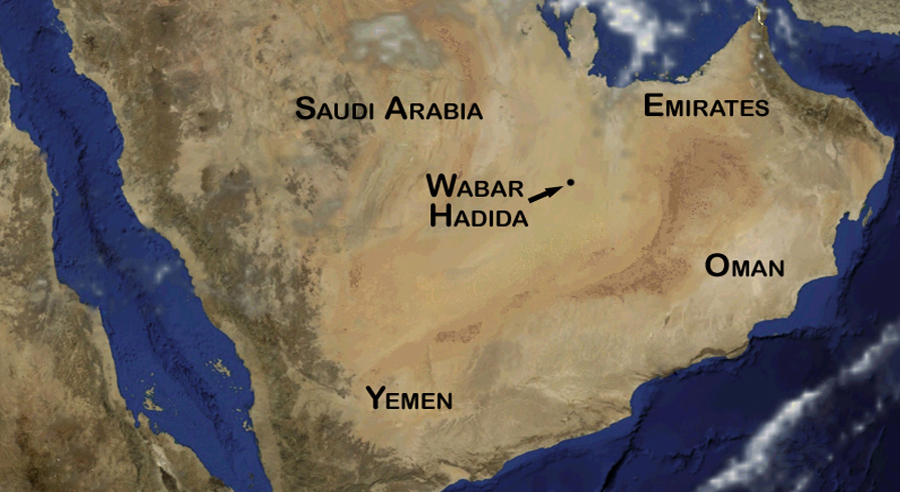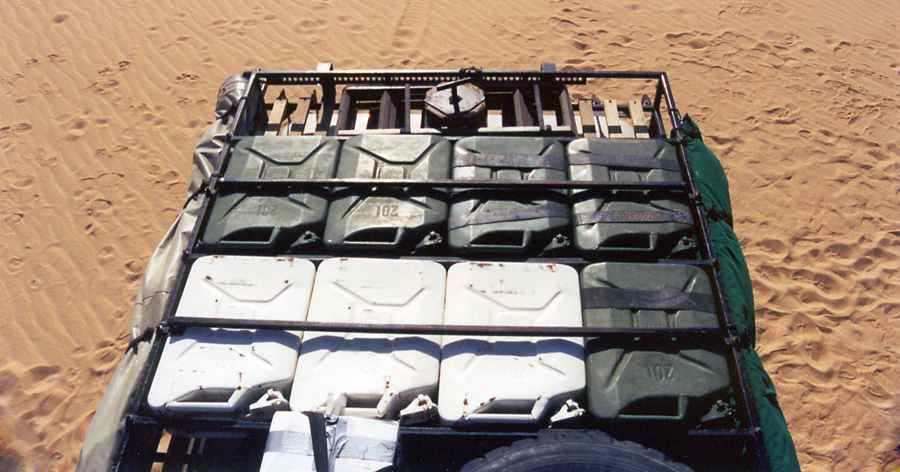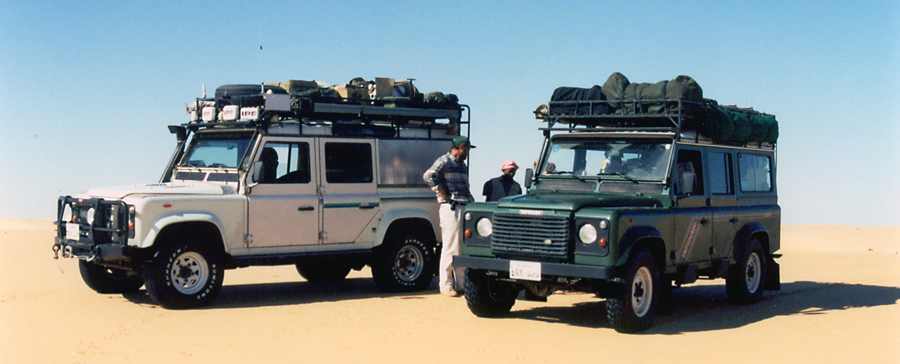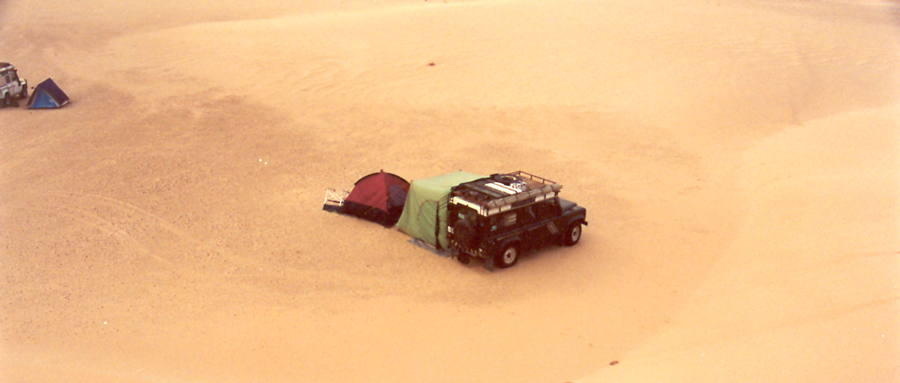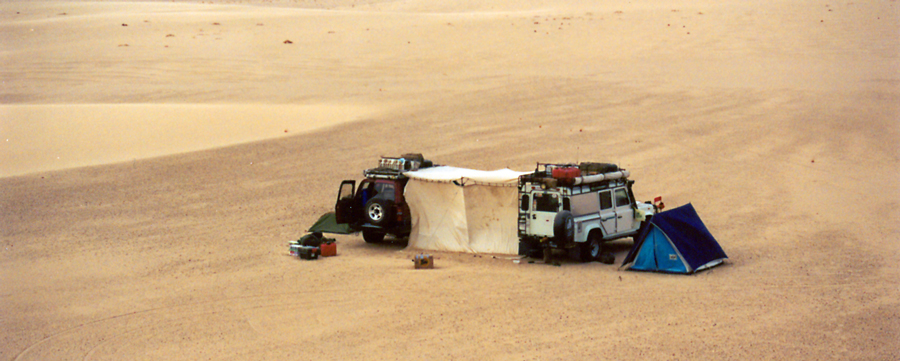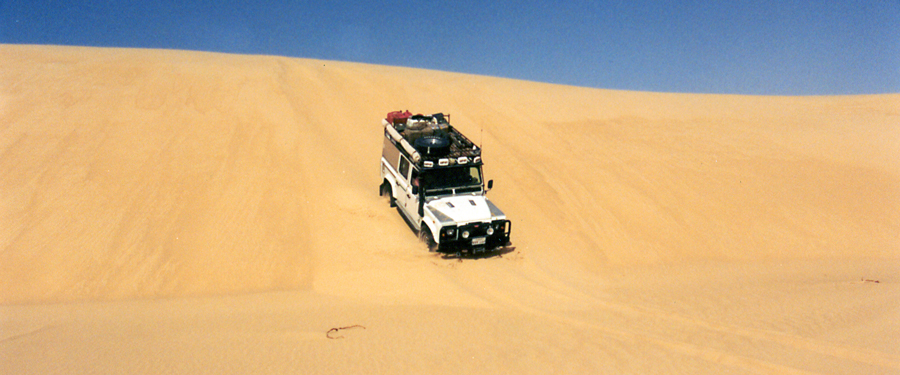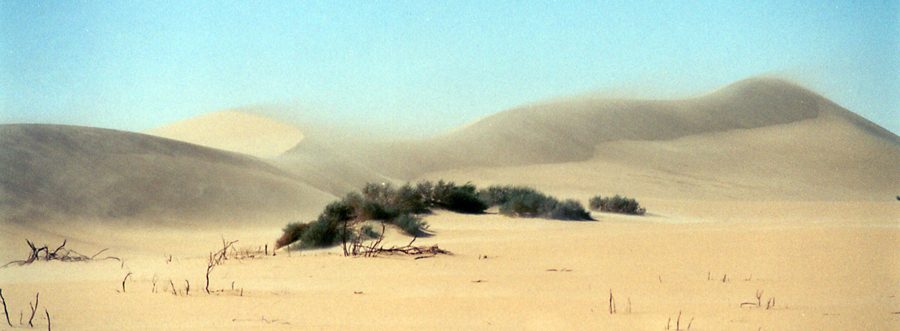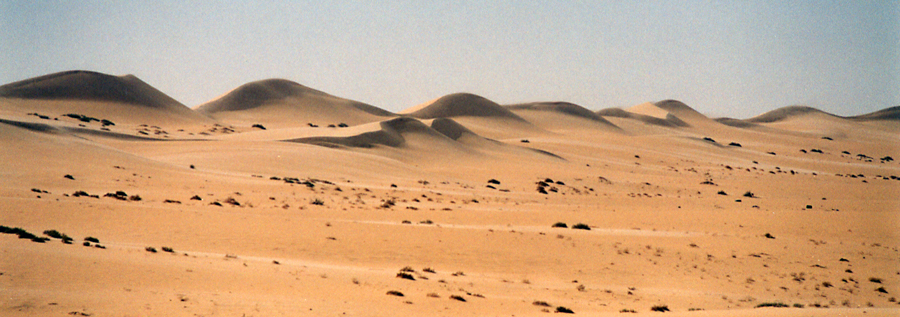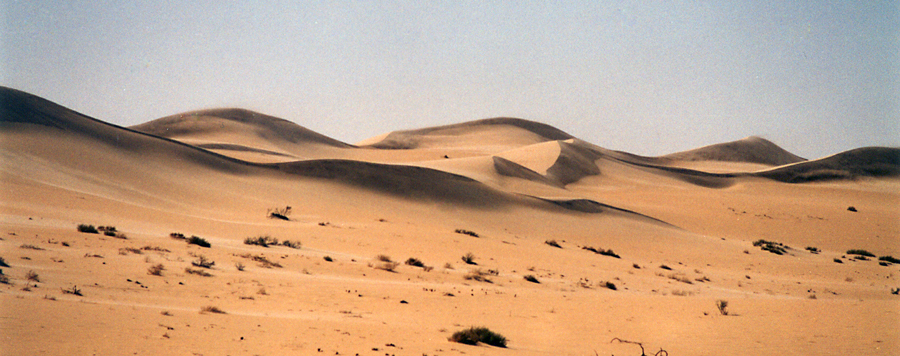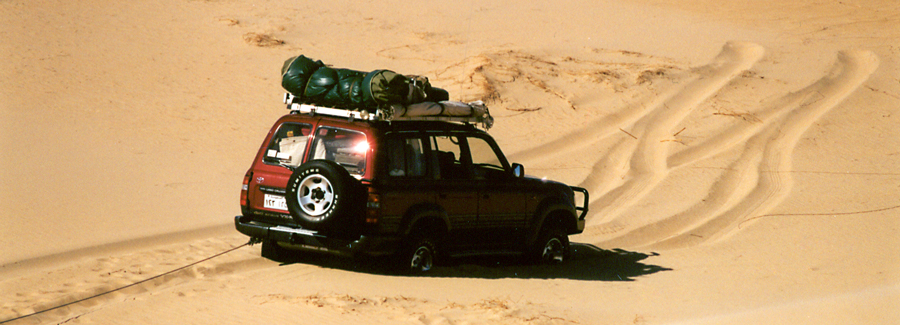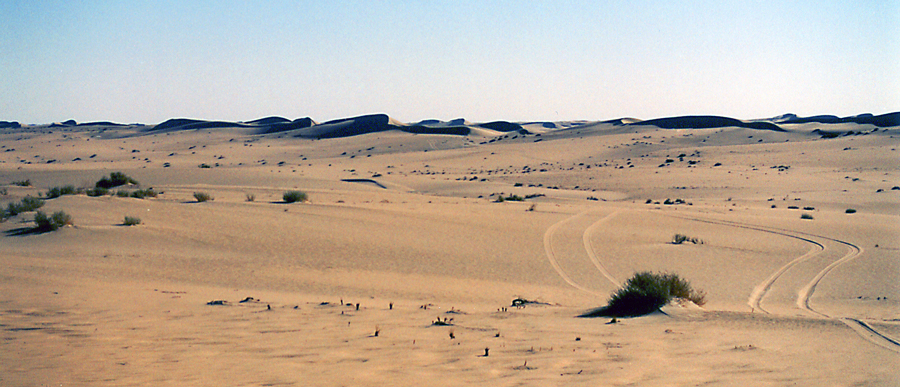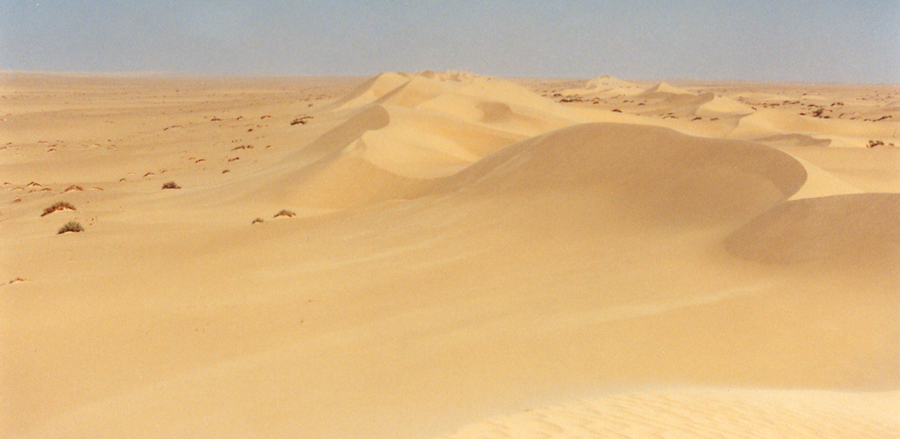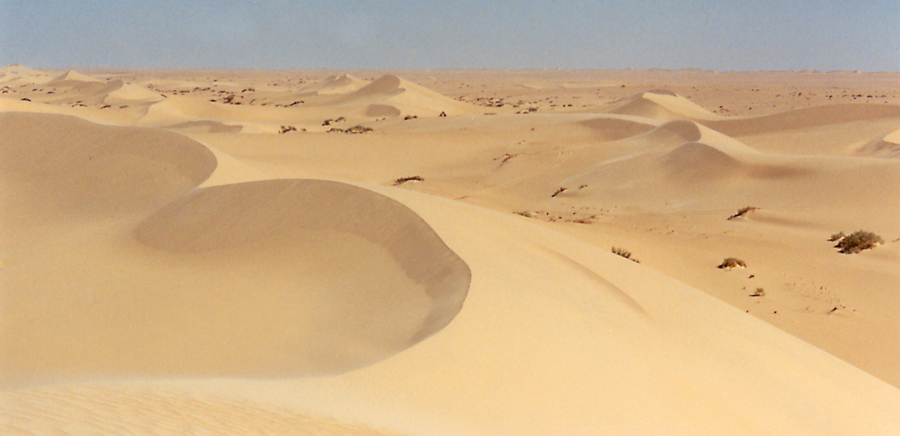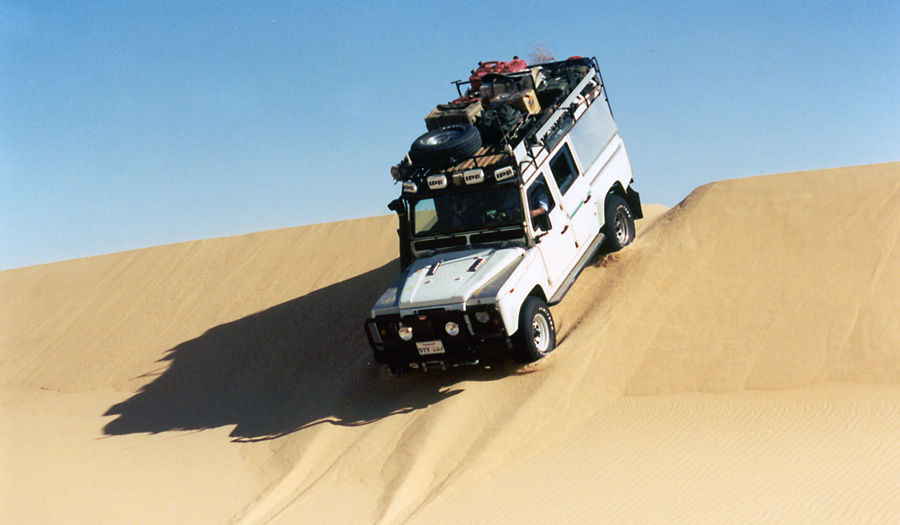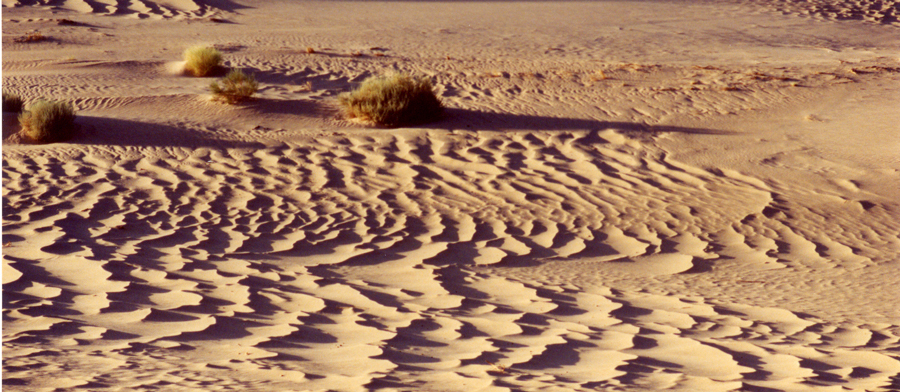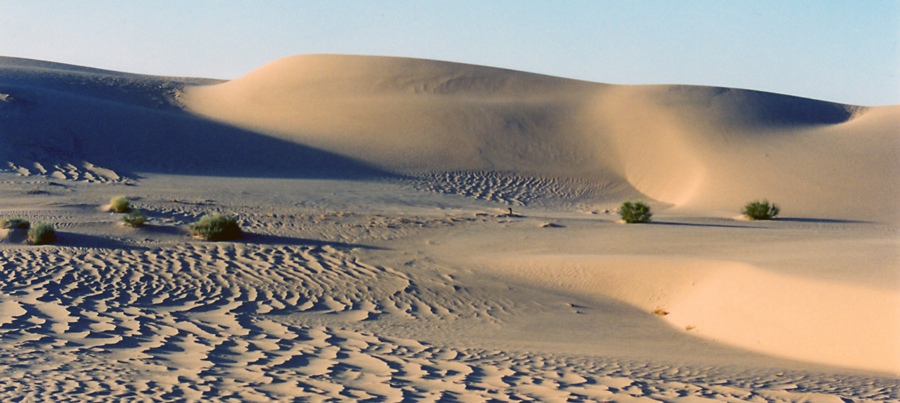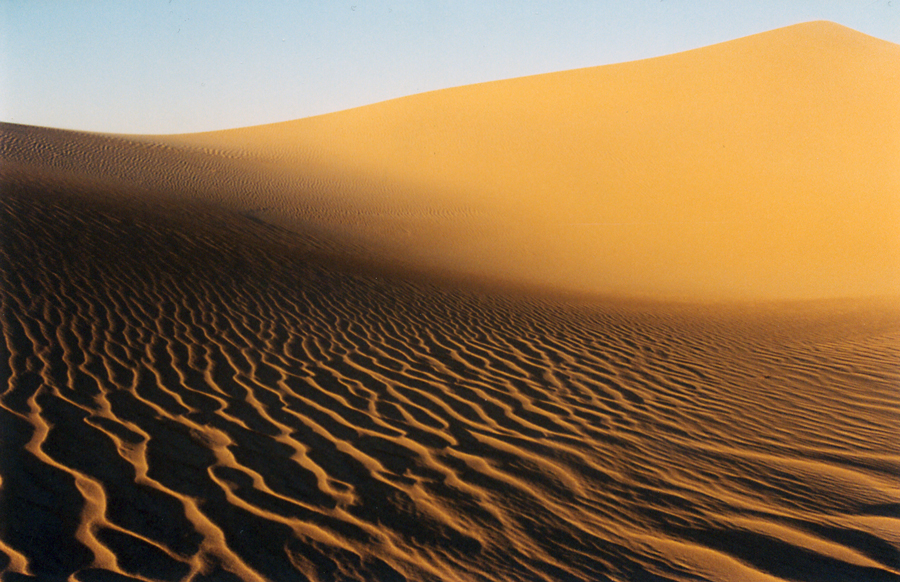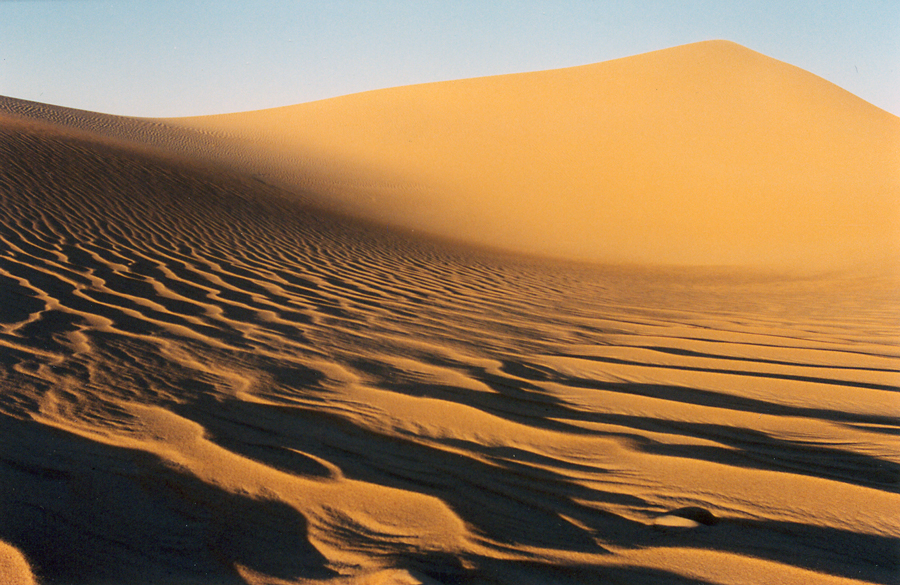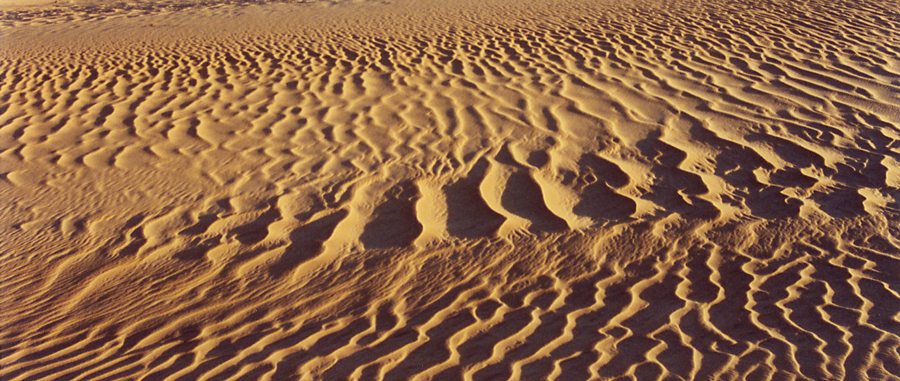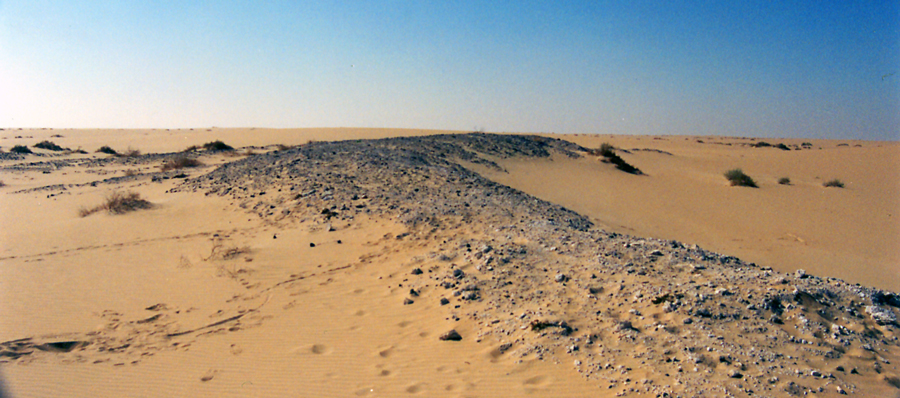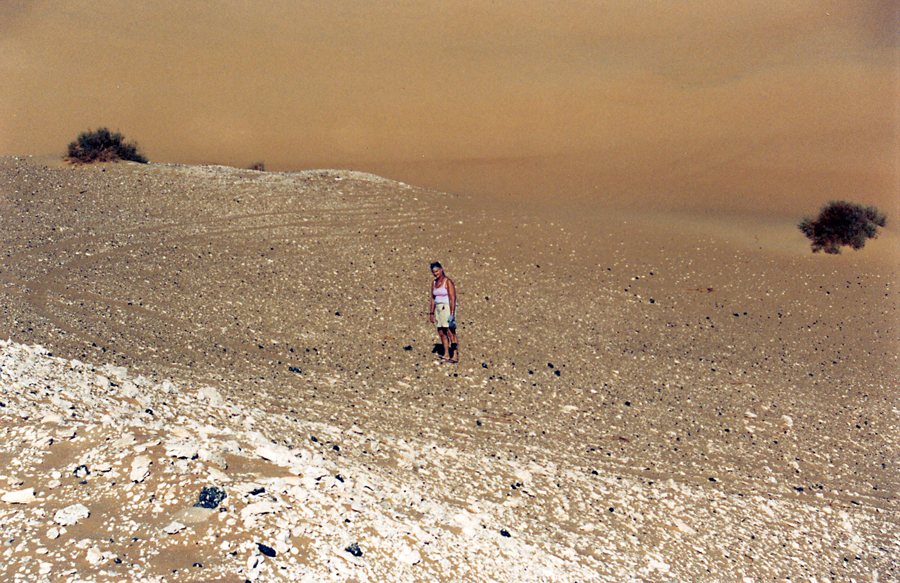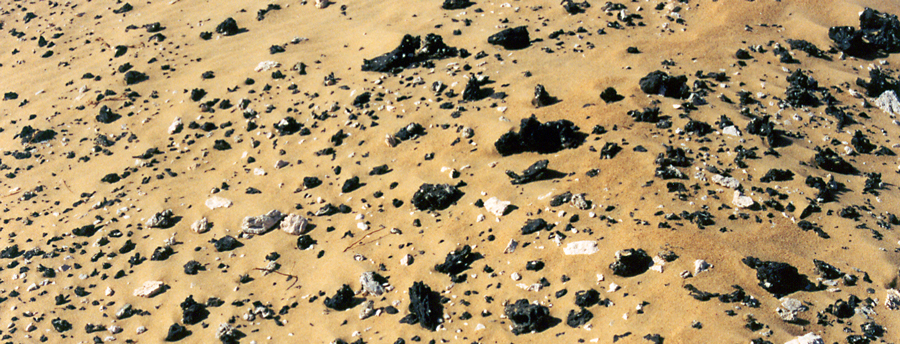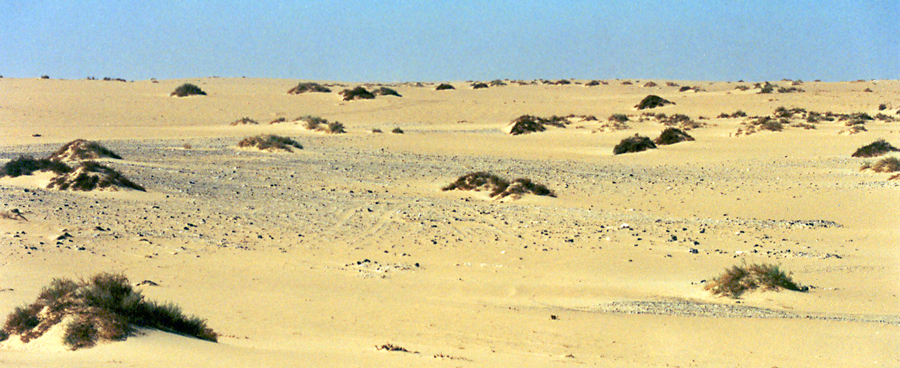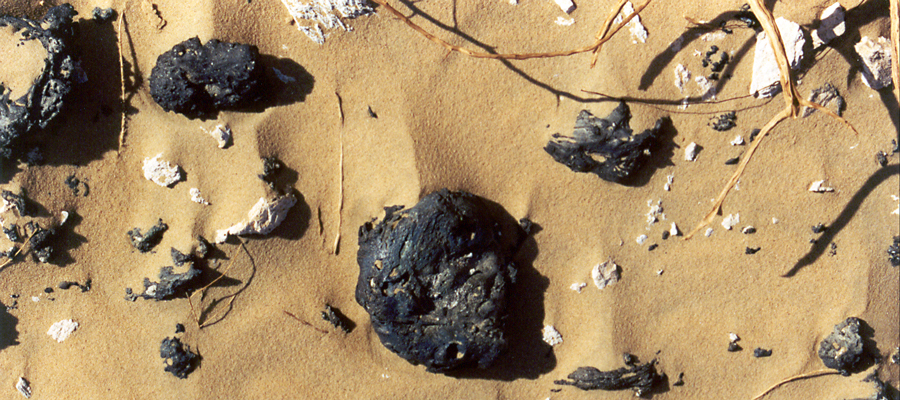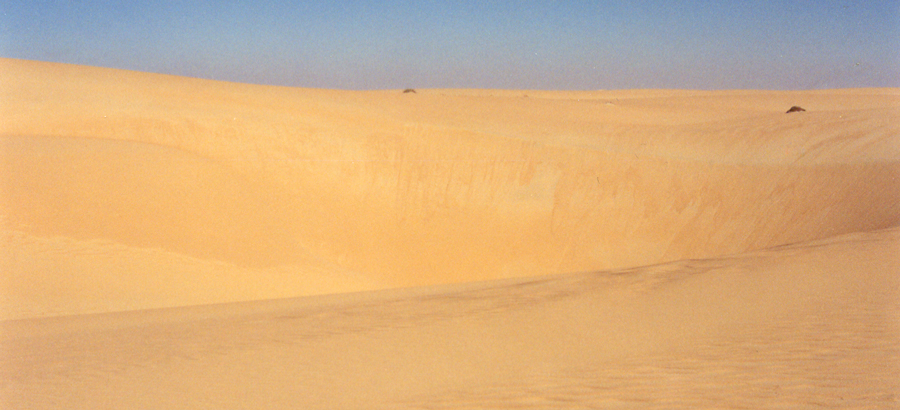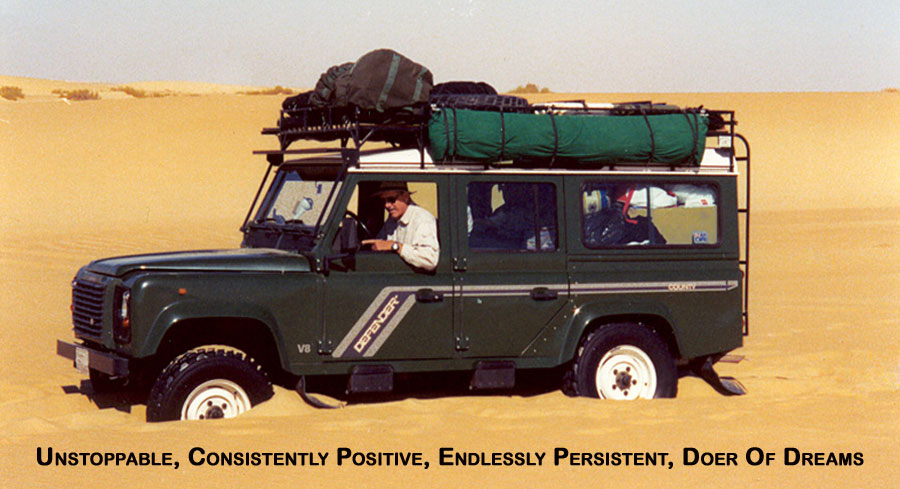When wind blows strong out of the north, the sand flies in sheets off the tops of the dunes. If you get downwind of these dunes, you better put on your sand goggles, or you will get a ton of sand in your eyes.
The blowing sand deposited on the downwind side of the dunes takes a long time to compact into firm sand. It frequently is powder soft, and if you attempt to drive there, you may sink up to your chassis. You wouldn't want to drive or camp there because blowing sand gets into everything and camping is miserable.
Sometimes you get stuck at the bottom of a slip face because you are going too slow as you descend, and when you hit the bottom, a soft sand trap awaits. This tends to be a greater problem in larger dunes than smaller ones. As you come slowly down the side of a slip face, it's a good idea to accelerate near to the bottom just in case you are entering a sea of soft sand. A heavy foot on the accelerator may allow you to power through the sand trap and move forward far enough to get on firm ground.
Bushes and obstacles on the far side of a slip face can be a nasty surprise. You pop over the top of the dune, and foliage at the bottom blocks your way at the base of the dune. That is a great formula for getting stuck at the bottom, and it will be a major exercise in vehicle recovery because maneuvering options are limited.
Calculating your fuel requirements must take into consideration that traveling in the dunes is a two way street. You probably are going to return home in approximately the same direction from which you came. Going against the dunes requires more fuel than going with the dunes.
When you go south with the dunes all you need to do is ride down the slip faces and enjoy the trip. There will be soft patches here and there that will stop you in your tracks for a short time, but at least you are not traveling against slip faces. Going against the dunes requires more fuel and route finding is a bigger challenge. You can't travel in a straight line. You spend time traveling in the valleys between the dunes looking for sand ramps that will get you over the slip faces. Sometimes, you may need to drive ten kilometers before you can find a sand ramp that will get you over a particularly large dune with a giant slip face.
The left side of this picture has several sand ramps that are good candidates for getting you up and over the dune line.
Going against the dunes gets more complicated when dunes are stacked on one other in two or three levels. In this situation, you find a sand ramp that gets you over the first row of dunes, and then you drive on the higher level looking for a second sand ramp that will put you over the second row.
Sometimes there is no way over the second or third level, and you have to descend back down from whence you came. Then you travel parallel to the dunes once again until you find another sand ramp and attempt to go up and over, and hopefully around the slip faces that block your way home.
Reading the sand is difficult. The lead vehicle that does route finding is the one that gets stuck most frequently. It's simply a fact of life when you drive in sand. There is simply no way of knowing that sand will be soft by just looking at it.
If it is important that we don't get stuck for some strategic reason, then the best way to find out if the sand is soft is to get out of the truck and walk in front of the vehicle. You walk to the right, left, and straight ahead.
If you are lucky, firm sand may be two feet in front of your truck. Sometimes, if you turn left you will be on terra firma in ten feet. But when you walk in front of your truck, and there is nothing but soft sand for hundreds of feet, the smart thing to do is to come out backwards. It's faster and less exhausting on people doing vehicle recovery.
If the ambient temperature is 100 degrees, it's not safe to use sand ladders and push by hand when vehicle recovery requires an hour of hard work. Someone will get heatstroke at worst, and everyone will end up dehydrated at best.
The Land Cruiser determined that it was impossible to move forward to firm ground, and the quickest and easiest way to recover this vehicle is to use a winch. In a few minutes of winching, the expedition is once again on the way to the meteor crater.
Later in the day, shadows grow longer and sand takes on a darker appearance. Depending where you are in the Empty Quarter, sand varies from a reddish color to a pale tan, and everything in between.
Getting between the slip faces in this picture would be easy as there is a well-developed sand ramp between the two slip faces. It doesn't get any better than that when you want to travel against the dunes.
As you travel south, rows of dunes often spread out. You may have two or three closely spaced rows, and then you have rolling hills of beautiful sand for a kilometer or more before you come to the next row of well-developed dunes. In the valleys between the dunes, the sand tends to be firm, and it's pure joy to glide over the sand. The tire tracks to the right show that the sand is relatively firm. When I drive over sand like this it reminds me of sailing over ocean swells in the Pacific Ocean, and the best thing is that the sand swells don't move.
It's late afternoon, and shadows grow long as the golden hour approaches. Sand takes on a golden hue, and life is good. Tire tracks in the foreground reveal the presence of exceptionally firm sand.
Why does this campsite have a circle of tire tracks all around?
We commonly make such a circle when choosing our camp just to be certain that we aren't setting up a camp in soft sand. If we bog down when we drive in a circle, we move to a different location.
Ending the day by bogging a vehicle in a campsite is a poor way to finish an expedition in the dunes. Equally, waiting until morning to extract a bogged vehicle is not the best way to start a day.
Hence, we drive around our campsite to test the sand before we choose our final resting place for the night.
Reading the sand is most difficult at high noon. Shadows from the morning are gone, and intense sunlight directly overhead reduces contrast to such a low level that it's easy to make serious mistakes. Without the contrast, you may drive off a small slip face without realizing it's there until your car suddenly drops three feet - a very rude awakening. The opposite can occur. You may not see a two foot sand ridge in front of you until your vehicle hits it and pops violently up over the elevated sand ridge. Mistakes like that place great strains on your suspension and frazzle your nerves. One of my friends drove his Defender off a small slip face that he did not see, and flexing of the vehicle's chassis resulted in a permanent wrinkle in the skin of his Defender next to his left rear tail light. Hogging of the frame can put creases in the sheet metal.
I have seen Defenders pop over a ridge of sand that they did not see, and suddenly the vehicle starts making a horrible grinding noise. When the Defender went over the sand bump too fast, it broke one of the engine mounts. Now when they step on their accelerator, the engine twists slightly in the engine bay, and the fan rubs on the fan shroud making a horrible noise.
When I was learning to drive in sand, my instructor showed me how to bump my Defender over a three to four foot slip face (from the wrong side of the slip face). If you drive up to it at just the right speed, your Defender will bounce up and over the slip face. It's a great technique when it works, but it's also the recipe for breaking an engine mount. If you are going to do stuff like that, you better carry spare engine mounts when you are traveling in deep desert.
Although there isn't much contrast in these dunes, you have one important factor in your favor. Wheel tracks ahead of you reveal a safe path through the dunes. By looking at the tire tracks, you can see where the sand is firm and where it is soft, so you know when you need to step on the accelerator. When the going gets tough, and there is no contrast in the sand, we always look for tire tracks to make our journey easier.
In the foreground just beyond the ripples in the sand, a light colored band goes from one edge of the picture to the other. This light golden band is one of those tricky sand surfaces that can fool you as you approach it in conditions of low contrast. The golden band may be a three foot high wall of sand that you may pop over and in the process break an engine mount. That same surface may have a gentle slope and not be a problem. Sometimes you have to stop your truck a distance off to discover what's happening so you don't make a serious mistake in deep desert.
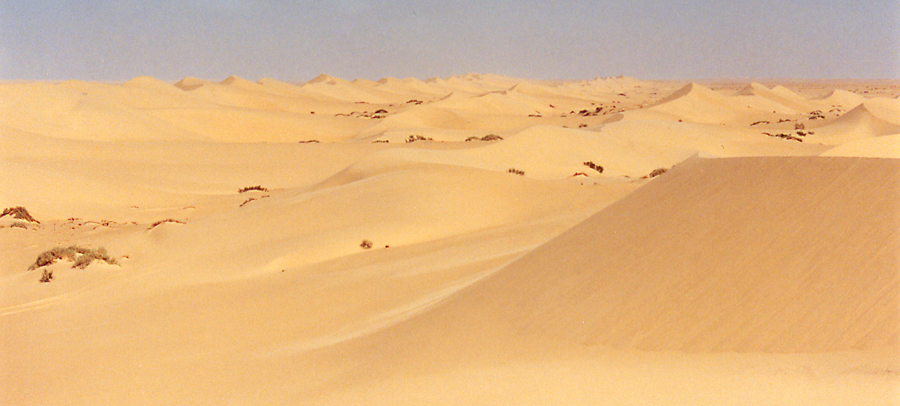
This line of closely spaced dunes is very tough to navigate at high noon. You don't want to drive fast because low contrast makes it easy to to have a problem. At the same time, the dunes are closely spaced with an irregular pattern of sand hills. In this location, winds alternate between two different directions. The dominant wind pattern is from the north causing the longitudinal rows of dunes. But in between the longitudinal dunes are secondary dunes created by winds from the east. The jumble of east/west dunes mixed in with north/south dunes means tough going, especially at high noon when there is little contrast.
I would avoid the dunes in the distance and make my best efforts to escape this mess by traveling right to left in the foreground where there are some barely perceptible tire tracks on the left side of the picture.
Low contrast means drive with care. Whether you are heading north or south, it appears that these two lines of dunes terminate about a kilometer in the distance. In this case the better part of valor is to make an end run around the dunes rather than try to go over them in conditions of low contrast.
Contrast is relative low, but a passage through the dunes looks within the realm of possibility. The dunes are closely spaced, and if the sand is soft, you are in trouble. Trucks will bog down. If the sand between the dunes is firm, you will breeze though wondering what everyone was worried about.
Driving down a slip face is true joy. The sand on this slip face is relatively firm as the Defender isn't sinking down to the chassis as frequently happens on large slip faces.
Red Land Cruiser is gutting it out driving through soft sand on Shaheen sand tires. I have seen him drive out of a bogging situation like this by lowering tire pressure down to 8 psi, and then putting the vehicle in lowest gear and slowly creeping forward or back. You can quickly tell whether you can creep out of a sand bogging by watching the vehicle and tires. If the vehicle moves forward or back a tiny bit at a time, the technique may work. If the tires simply spin and the vehicle sinks down further, then it's useless to continue spinning the tires. It will only make things worse.
If you have sand tires and you are willing to lower your pressure down to 8 psi, you can sometimes drive out of a serious bogging.
When I first drove in the Empty Quarter, I coined a new saying, "SASTRUGI HAPPENS".
Sastrugi are the wavy elevated ridges of sand created by blowing sand.
Sastrugi comes in two types. There is hard sastrugi and soft sastrugi.
Sastrugi happens in the valleys between the dunes. Hard sastrugi is very hard, and feels like driving over giant corrugations or speed bumps. It will shake your vehicle until you wonder if something is going to break. It will shake your teeth until they rattle.
Soft sastrugi is soft like quicksand. It looks like you are going to be hammered by severe corrugations as you approach a patch of sastrugi, but the instant you enter it, you immediately sink up to your chassis in soft sand.
You can't tell ahead of time whether the sastrugi is going to be of the hard or soft variety. You simply must drive though it to find out what is going to happen.
If you think the sastrugi is soft, you step on the gas and try to blast through it. If it turns out that the sastrugi was actually hard and you are going too fast, the sastrugi will shake your vehicle to bits, and unsecured gear will be flying around in your truck by the time you reach the other side.
If you think the sastrugi is hard, you let up on the accelerator and slow down so it won't shake everything up. If it turns out that the sastrugi is actually soft, you instantly bog down in the soft sand. Some days you feel like you can't win.
When you encounter sastrugi, you have several options. You can drive around it like a skier doing the giant slalom. You can stop your truck before you get to the sastrugi and walk through it to see whether it is hard or soft. You can hang back and let someone else drive though it. You instantly discover whether it is hard or soft when you look at his tire tracks. If it is soft, you put your foot down and blast through. If it is hard sastrugi, you drive though at a slow and gentle pace.


